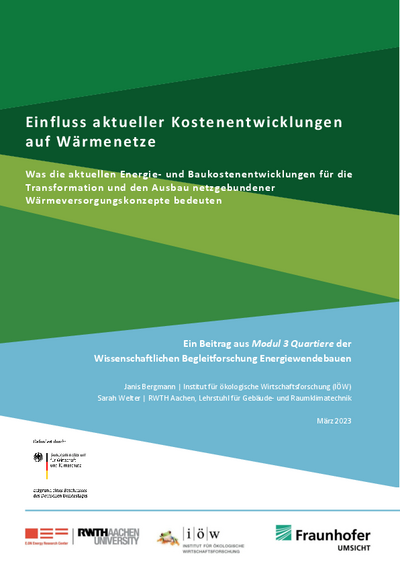Impact of current cost developments on heat grids What current energy and construction cost developments mean for the transformation and expansion of grid-connected heat supply concepts
Heat grids supply consumers with grid-connected heat. They play an important role in achieving a climate-neutral building stock. This is especially true in existing neighborhoods, which can only be supplied efficiently to a limited extent with decentralized supply solutions such as heat pumps due to the high heat demand of the buildings and the required high system temperatures.
The current developments surrounding the war in Ukraine and the associated high price increases for energy sources – especially fossil natural gas – are leading to greater acceptance and profitability of innovative grid-based heat supply solutions compared to fossil heating systems. In this context, heat grids offer the possibility of efficiently harnessing local renewable energy sources such as waste heat or geothermal energy, thus also contributing to security of supply.
In addition to energy costs, however, construction costs have also risen significantly in recent years. New construction of heat grids is characterized by a disproportionately high share of construction costs in the resulting heating costs. The high construction costs thus burden the competitiveness of heat grids compared to decentralized solutions and could inhibit the expansion of network infrastructures or lead to high costs for consumers.
This study examines how energy and construction cost developments affect the transformation and expansion of heat grids compared to decentralized supply solutions. In addition, with the help of profiles of current research projects, insights are provided into how innovative research projects are affected by the current developments and how the project ideas can contribute to increasing the competitiveness of heat grids in the medium term.



